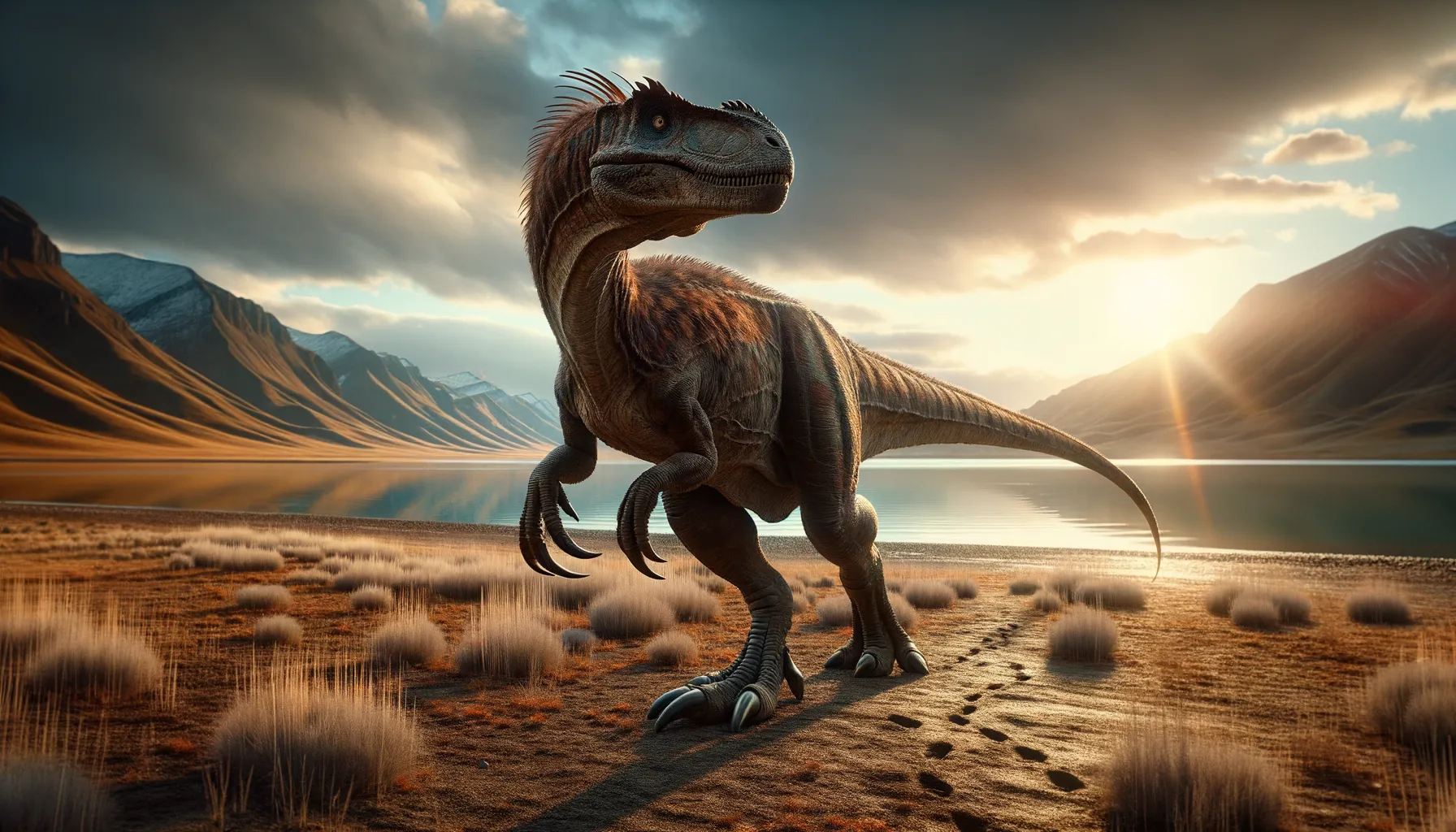
Adasaurus
Swift predator of the Cretaceous era.
Period
Cretaceous
Length
Approximately 1.8 meters long.
Height
Stood about 0.6 meters tall at the hip.
Weight
Weighed around 15 kilograms.
Adasaurus was a small theropod dinosaur that roamed the Late Cretaceous landscapes of what is now Mongolia. Known from only a few fossil specimens, it was a member of the Dromaeosauridae family, closely related to Velociraptor and other well-known dromaeosaurs. It had a distinctive sickle-shaped claw on each foot, indicative of its agile and predatory lifestyle.
Diet
Adasaurus was carnivorous, preying on small animals within its habitat. Its diet likely included small mammals, reptiles, and other dinosaurs.
Hunting
This dinosaur used its speed and agility to catch prey, employing a strategy of quick, precise attacks. Its sickle-shaped claw was a key tool in subduing its prey.
Environmental challenges
Adasaurus lived in a dynamic environment with changing climates and competition for resources. Seasonal fluctuations would have impacted its food supply, challenging it to adapt its hunting strategies. Predation risks posed by larger dinosaurs also shaped its survival tactics.
Speed
Relatively fast for its size, agile on its feet.
Lifespan
Estimated lifespan of around 10 to 15 years.
First discovery
Discovered in 1983 in Mongolia by paleontologist Rinchen Barsbold.
Fun Facts
- Adasaurus is named after Ada, an ancient Mongolian mythological figure, reflecting where its fossils were found in Mongolia.
- This dinosaur lived in the Late Cretaceous period, about 70 to 65 million years ago.
- Adasaurus was a theropod, which is a group of bipedal carnivorous dinosaurs.
- Despite its fearsome reputation, Adasaurus was relatively small, roughly the size of a modern-day turkey.
- It belongs to the same family as the famous Velociraptor, known as Dromaeosauridae.
- Adasaurus likely had feathers, adding to the bird-like characteristics found in some theropods.
- This dinosaur is thought to have used its sickle-like claws, not just for hunting, but perhaps also for climbing or defense.
Growth and Development
Adasaurus likely grew quickly to reach maturity, a common trait among theropods. Juveniles would have shown distinct growth stages, developing their hunting skills over time. As they matured, changes in size and muscle structure enhanced their predatory capabilities.
Habitat
Adasaurus inhabited the semi-arid regions of Late Cretaceous Mongolia. Its environment featured sparse vegetation, with open spaces suitable for ambush hunting. Water sources would have been limited, influencing its territorial range and migration patterns.
Interaction with other species
Adasaurus coexisted with other dromaeosaurs and various dinosaur species, leading to both competition and predator-prey dynamics. It may have interacted occasionally with larger herbivores as a potential scavenger.
Natural lifespan
Lived naturally for about 10 to 15 years if it survived beyond juvenile threats.
Reproduction
Reproduction likely involved laying eggs, similar to other theropods. Nesting sites would have been chosen based on safety and proximity to resources. The care given to offspring is uncertain, but some level of parental involvement is possible.
Social behaviour
There is limited evidence of social behavior, but fossils suggest potential pack-like groupings. Group hunting may have been a strategy to capture larger prey.
Fossil locations
Fossils of Adasaurus have been found primarily in the Nemegt Formation in Mongolia, a renowned site for diverse dinosaur discoveries. These locations provide critical insights into its existence and environment.
